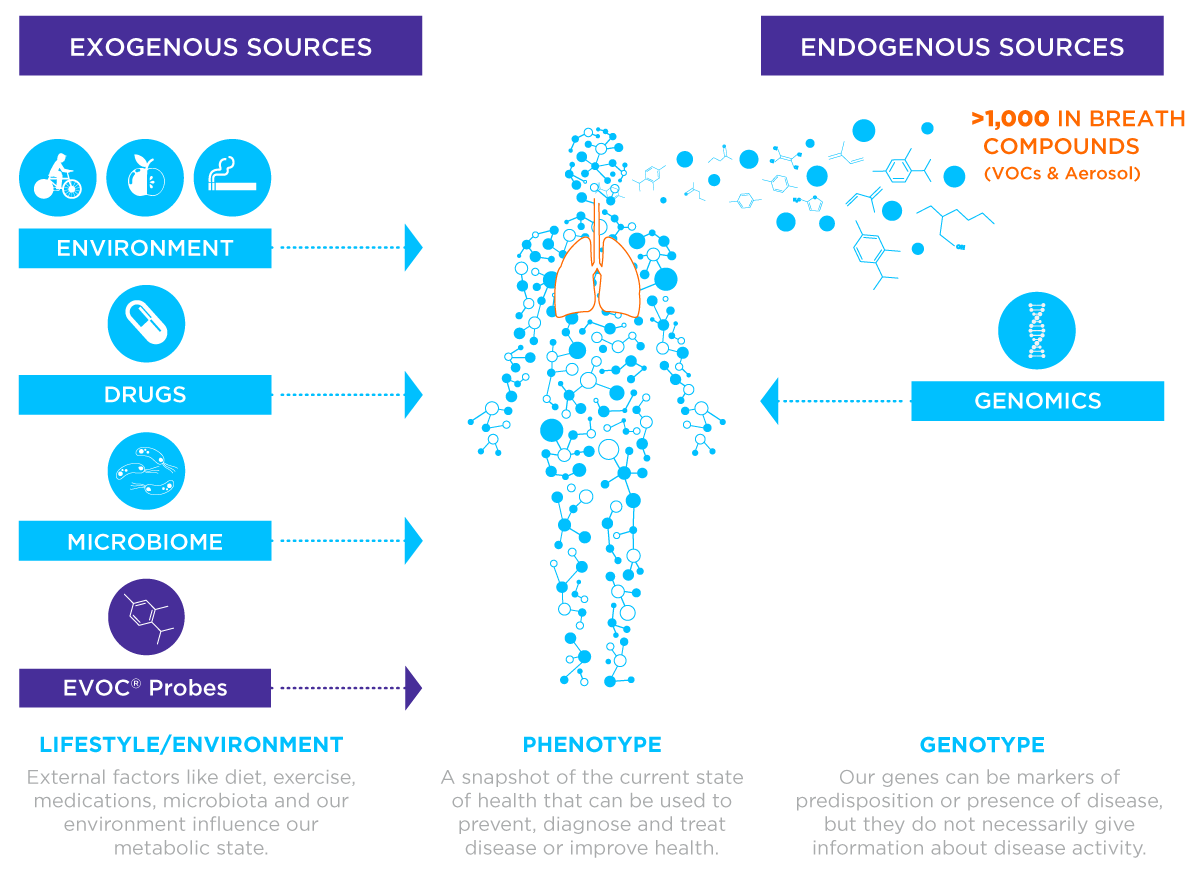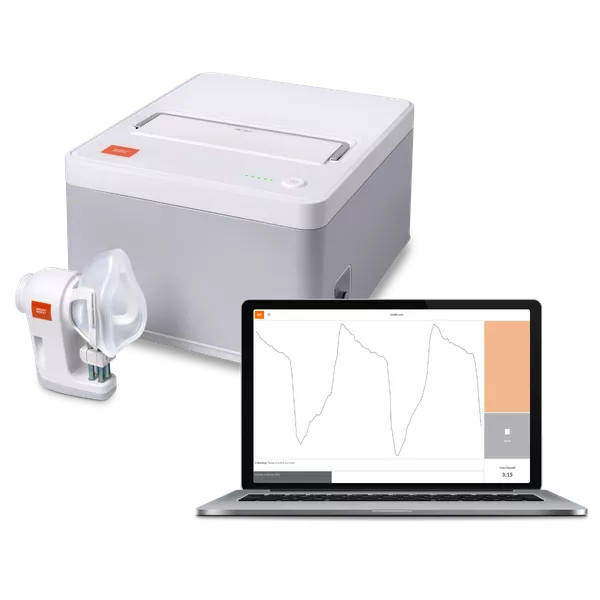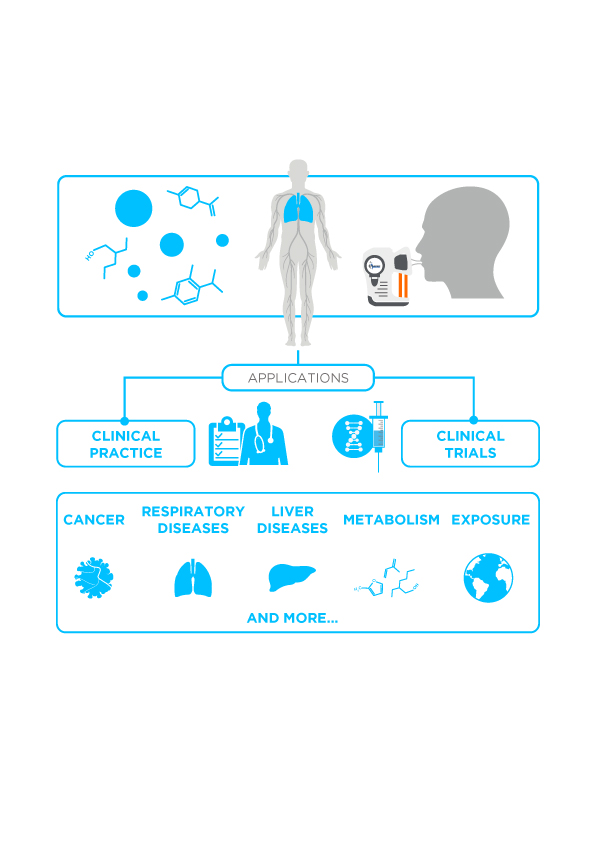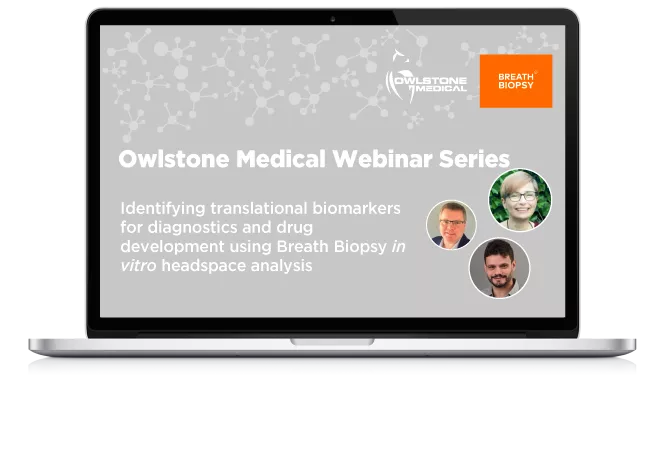
Breath Biopsy® – Breath Analysis of VOC Biomarkers
Non-invasive breath analysis of biomarkers for clinical use
What is Breath Biopsy?
Exhaled breath is more than just air, it contains hundreds of volatile organic compounds (VOCs) that represent rich sources of biological information about underlying processes in the body. Breath Biopsy refers to our range of products and services that provide a reliable platform to both collect and analyze breath samples. Breath analysis therefore makes it possible to identify novel breath VOC biomarkers that could potentially:
- Serve as non-invasive screening tools for early diagnosis
- Stratify patients by phenotype for precision medicine
- Monitor response to treatments
- Measure exposure to hazardous substances and their impact on the body
What is a Breath Biomarker?
Breath biomarkers largely arise either as VOCs captured from the air or as non-volatiles found within respiratory droplets from exhaled breath aerosols. Both sources are of great interest for research and medical applications as they provide complementary information. VOCs contain at least one carbon atom and are gaseous at room temperature and standard pressure conditions. Due to their volatile nature, VOCs in breath are typically small molecules. This means that VOCs generated by human metabolism (endogenous) can diffuse from their point of origin, and be emitted from the breath. One of the major benefits of utilizing VOC biomarkers is that they can be sampled non-invasively from exhaled breath. VOC biomarker analysis could therefore address currently unmet clinical needs to improve public health, including early disease diagnosis.
VOCs can arise from exogenous sources (food, smoking, pollution, medication, etc.) and from endogenous sources within the body. As such they can reflect biochemical and metabolic activity as well as environmental effects. Endogenous VOCs are the product of internal human metabolic processes and, as such, the metabolic effects of diseases can be reflected in the pattern of exhaled VOCs. VOCs are commonly quantified and identified using detailed chemical analysis tools like gas chromatography (GC) combined with mass spectrometry (MS).


Investigate Breath Biomarkers with Breath Biopsy
The Breath Biopsy Collection Station, featuring the ReCIVA® Breath Sampler and CASPER™ Portable Air Supply enables reliable, reproducible collection of breath VOCs for a wide range of applications. Subjects breathe a controlled supply of filtered air to minimize background contaminant VOCs from entering the breath sample. The ReCIVA device uses inbuilt sensors to specifically collect the fraction of breath associated with air deeper in the lungs to maximize the collection of biologically relevant VOCs, which are then adsorbed onto sorbent tubes within the ReCIVA device. These tubes can be shipped for processing and analysis at our specialized Breath Biopsy Laboratory.
Using an advanced analysis platform built on GC-Orbitrap™ technology we can support high-resolution targeted and untargeted breath analysis for biomarker discovery. We can perform statistical analyses and provide a detailed report of results to help identify and develop biomarkers of interest for a range of applications.
This approach can also be combined with exogenous VOC (EVOC®) Probes, which further increase sensitivity by targeting specific biological processes for exhaled VOC biomarker analysis. This further increases the power of exhaled breath analysis in disease detection.
What are the key applications of Breath Biopsy?
Biomarkers originating from all parts of the body are captured in breath, making Breath Biopsy applicable to study a wide range of systems including the microbiome, as well as inflammatory, respiratory, liver, metabolic, cardiovascular, infectious diseases, and various cancers. As well as working with our academic and industrial partners, we are also developing our own Breath Biopsy tests for lung cancer as part of our EVOLUTION trial, liver disease, and have pioneered a portable hydrogen and methane breath analyzer device for on-the-go monitoring of the gut microbiome relevant for certain gastrointestinal conditions.


